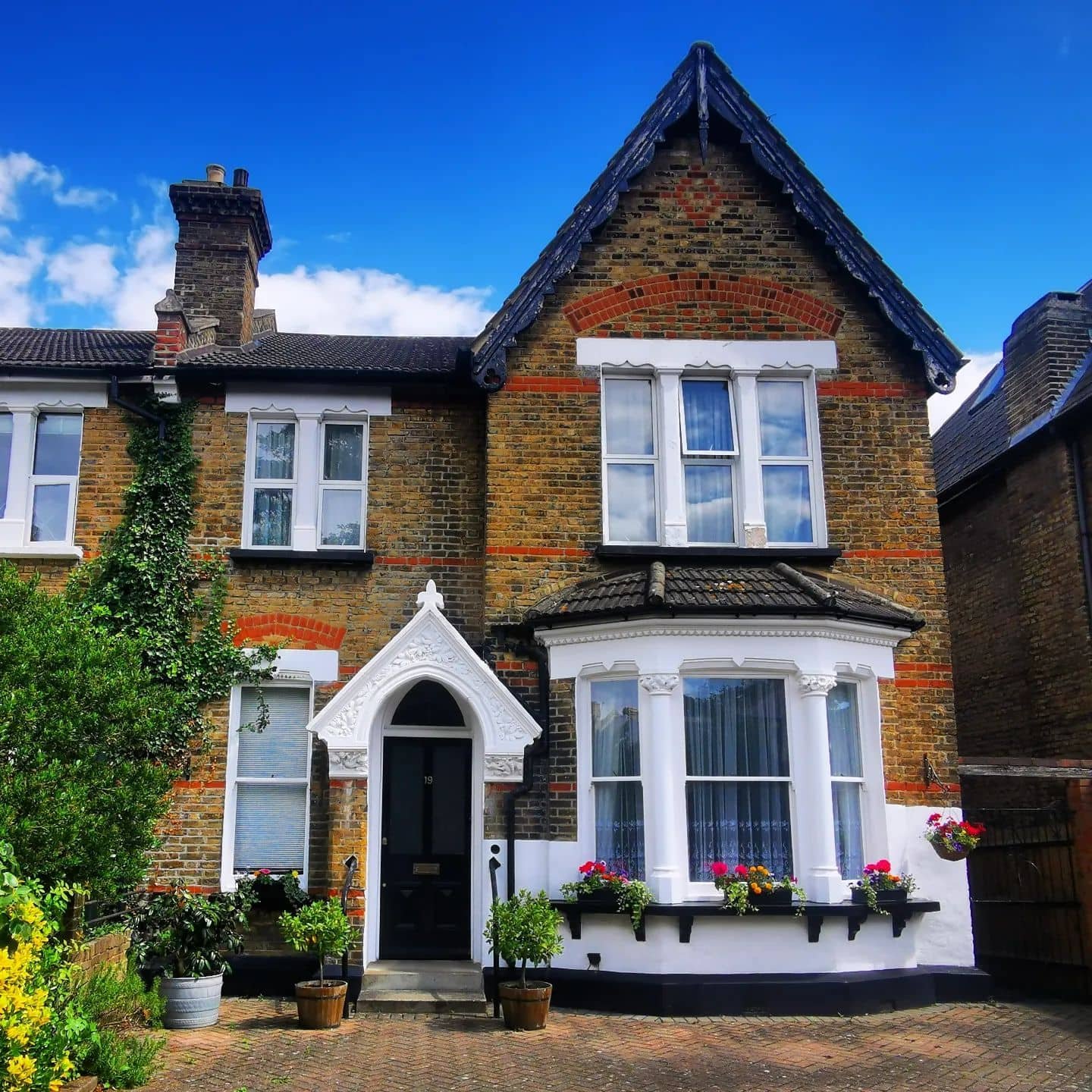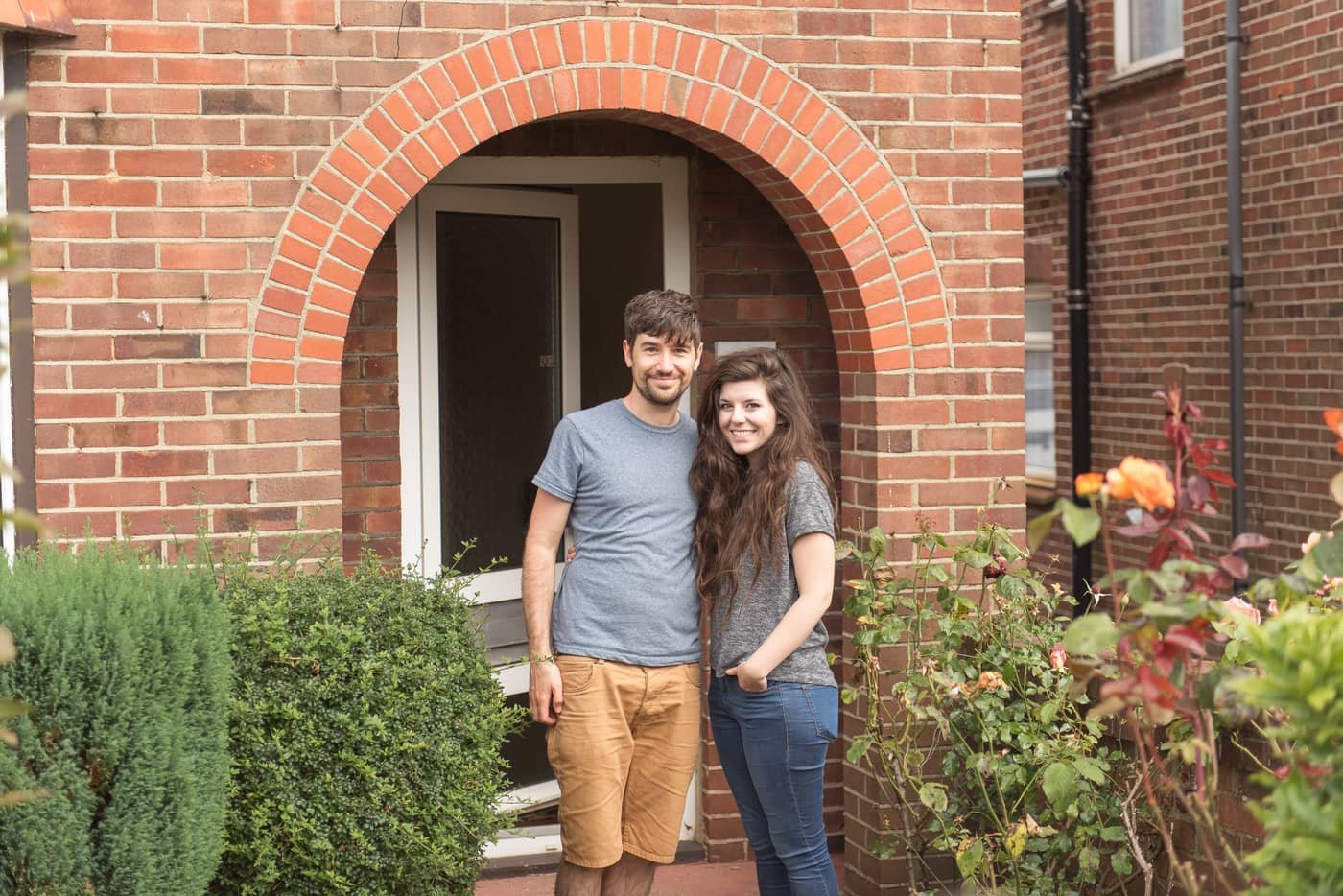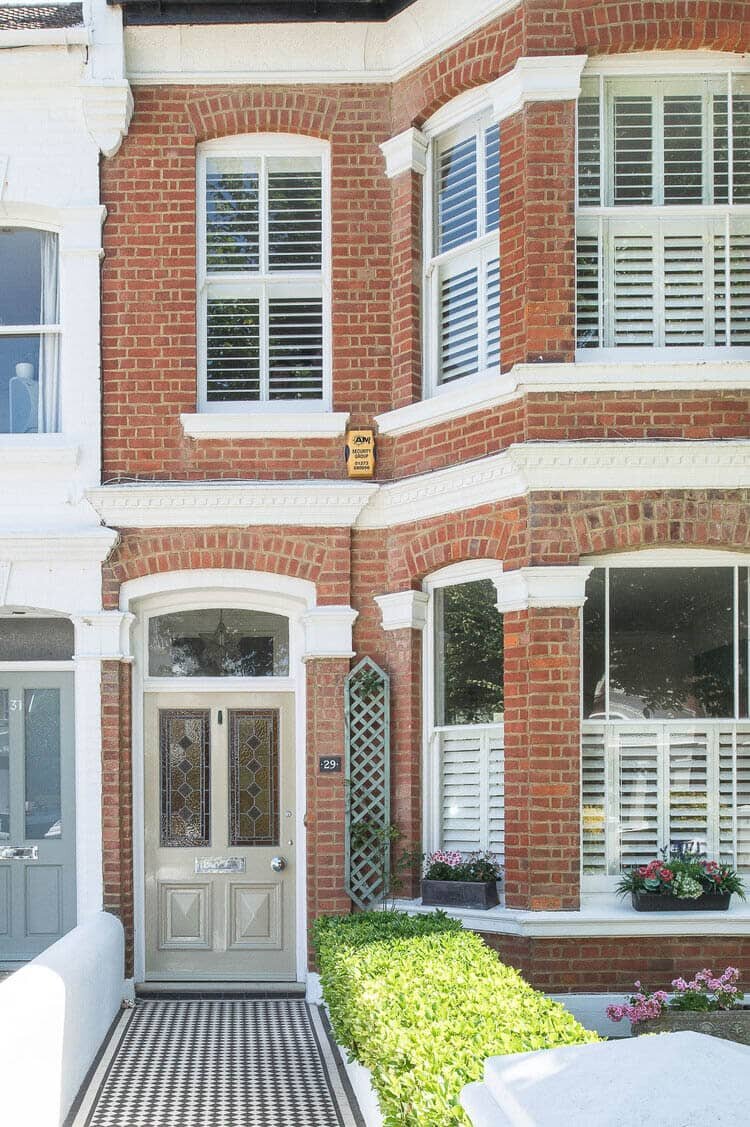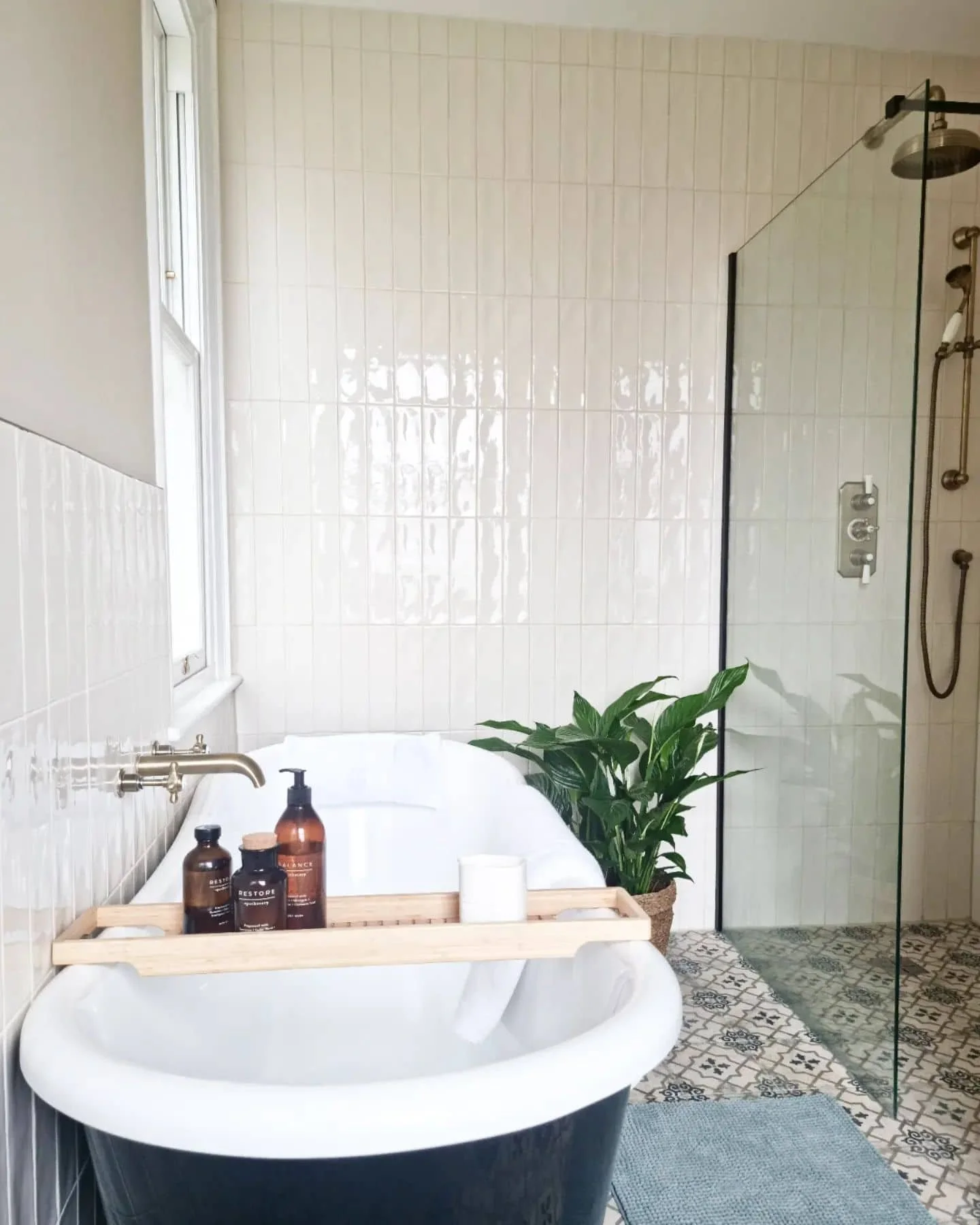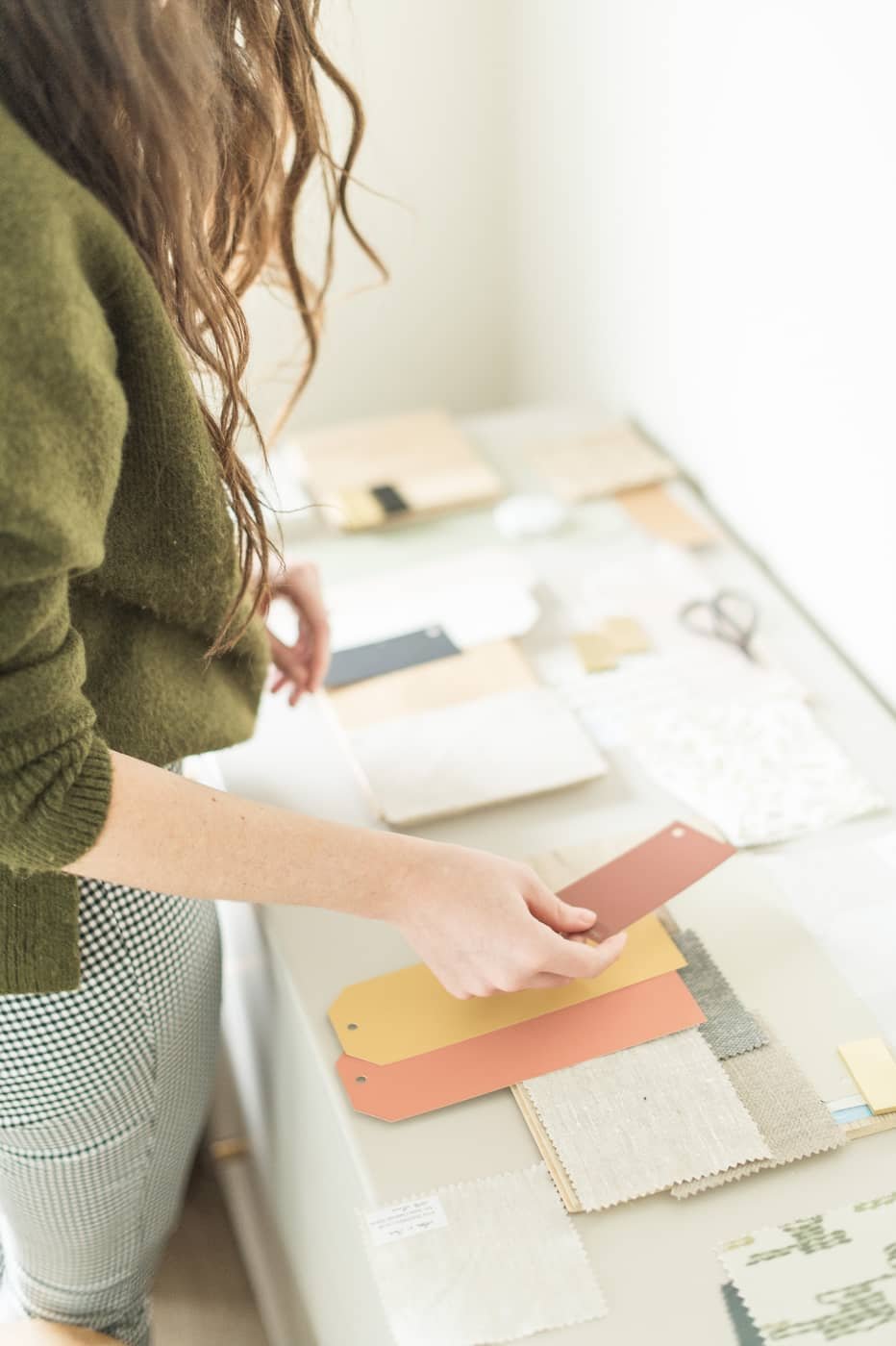
Ultimate Guide to Victorian House Renovations
Our student Jen’S Stunning victorian house renovation
When Jen first stepped into her Victorian house (pictured), she was mesmerised by the intricate cornicing and original fireplaces but also paralysed by fear…
What if the roof was on its last legs?
What if the plaster hid structural cracks or costly damp issues?
It’s a worry many Victorian house renovators have – the charm of period features can come with hidden, expensive surprises.
I’m guessing you’re renovating a Victorian house with similar worries? Well, all I can assure you is, Victorian house renovations are one of the best property investments you can make.
Now, they don’t come without their difficulties – take it from me, I used to own a Victorian property.
But renovating a Victorian house is incredibly rewarding, and with the right knowledge and planning, Jen was able to tackle these concerns head-on and transform her Victorian property into her dream home.
In this guide, I’m going to try and set aside some of your worries. Sharing a step-by-step on how to renovate a Victorian house sympathetic to its architecture, your budget and your needs.
Here, I’m talking you through everything you need to know if you’re getting the keys to a Victorian house renovation, from budgeting for your Victorian house renovation to deciding on layouts and managing the build.
By the way, if you’re new here, I’m Fi + my other half is Neil 👋 After wasting lots of money and making stressful mistakes during our first major renovation project, we made it our life mission to make your renovation easier, less stressful, whilst saving you thousands.
Start learning today with our free Survivors Guide to Renovating to renovate your house with confidence.
Let’s begin!
In this guide:
Renovating a Victorian house – A Brief History
Renovating a Victorian house – What to look out for
Renovating a Victorian house – Where to start
Budgeting for your Victorian renovation
Layouts for your Victorian renovation
Designing your Victorian house
Planning your Victorian renovation
Shopping for your Victorian renovation
The Build
Before you start your Victorian house renovation – don’t make the same mistake we did 🙅🏻♀️
I know you’re super excited to jump head first into grand designs for your Victorian renovation, but take it from Neil and I, there’s some essential preparation you need to complete before hiring an architect.
This mistake cost us £3.5K! Follow our advice below and it could save you money you could put towards the build instead.
Back in 2016, we were newbie renovators just like you.
We got the keys and were a cocktail of emotions! Excited, nervous and overwhelmed by the fear of costs spiralling.
Looking back we were so naive.
It’s taken hindsight, hands-on experience and my career change to become an interior designer to teach us ‘the right way’ to approach a renovation and this was not it ❌
Neil and I originally had grand plans to build an extension – with a tight budget!
Like a moth to the flame, we instructed and paid an architect’s fees to draw the plans but little did we know a few months later, we ripped up those plans that cost us £3,500 and went our own way with the layout instead.
Our naivety had us instructing an architect too soon.
But the last minute decision to ditch our extension plans saved us nearly £80,000!
Truthfully? It’s such a common mistake. It’s why we’ve made it our mission to help UK renovators who are taking on renovations for the first time, start the right way and avoid expensive hiccups.
When you finish reading this step by step Victorian renovation guide, I recommend joining our Renovating a Victorian House email series for more advice on budgeting and saving money (it’s completely free).
Renovating a Victorian house – a brief history
Built in 1837–1901
Victorian houses are one of the best built properties you can invest in, in part due to the improved standards of building work, wealth, and industrial development that happened during the boom of industrialisation in Queen Victoria’s era. With huge demand for house in a fast growing population, a mix of Victorian housing styles were built. The classic Victorian terraced house designed for the working class which were more compact with lots of character. And the large Victorian town houses, and Victorian semi-detached houses for the affluent who expected more space and luxury in their homes. Thousands of Victorian houses were built per city, which didn’t leave much space for the Edwardian houses (that’s why you’ll find Edwardian properties lying on the suburbs).
Are Victorian houses a good renovation investment?
They’re one of the best. Victorians built houses near all the major transport links, shops and railways that are still in use today making the typical location for Victorian houses very sought after.
We recently read that Victorian properties get between 4-5 more offers than modern houses when under offer which can mean 2 things. They’re competitively priced, but hold their resale value.
The potential Victorian properties have for renovators is impressive. Typically built with steep pitched roofs, they lend themselves well to loft conversions and built on good-sized plots, there’s often a lot of potential to extend, which would explain why terraced house renovations have become so immensely popular over the years.
If you’re fortunate to have bought a property that still retains features such as ornate cornicing, high ceilings, intricate fireplaces or stained glass, you’ll own a piece of history!
Renovating a Victorian house – what to look out for
Now, it’s safe to say all renovation projects come with their problems no matter what era they were built in and while Victorian houses were built in great locations with spacious rooms and a lot of period detail, they can pose their problems. A heads up here that if you’re worried about your renovation costs spiralling we recommend you download our free Survivor’s Guide to Renovating email series or dive straight into our online course, both will support your budgeting to ensure your project is a success. (Do this early on in your project, even before you have the keys for the best results).
What to look out for:
Damp
The Victorians were by and large still working out the nuances of constructing buildings and therefore ventilation issues are common in this style of house. Victorian houses were not designed with damp proof courses like modern day housing, and usually, remedial work to solve and prevent further damp is the first investigation for Victorian house renovators.
If you’ve just got the keys, ensure any air bricks around your property are unobstructed. Clear gutters and block drains to ensure water runs away from the property. Move or line any large flower beds that may sit close to the building and get regular fresh air into the house every day, simply by opening the windows. For more serious damp issues not caused by condensation problems, we recommend getting a damp survey for the house which will outline in depth the specific issues with your property and recommended remedial work from an expert.
Defective masonry
Internally, cracks, uneven plaster and incorrect plasterwork to internal walls is a common problem in Victorian house renovations. Over the years, cement was often used to patch areas such as cracks in render and plastering which is something to look out for as you renovate. Cement doesn’t provide breathability to the walls and can provoke damp and a suite of ventilation issues. Using lime finish and breathable paints can help to avoid dampness internally but our advice is to seek expert advice if/when you come to render or re-plaster. Call a reputable plasterer to advise or undertake the work because you will need to ensure the right materials are used for damp prevention.
Insulation
Beautiful as they are, the sash windows Victorians loved so much aren’t the most energy efficient nor were they big into insulation with the roof only allowing for joists and rafters! For Victorian house renovators, a priority early on will be draught-proofing windows and doors and investing in a suitable upgrade to insulation that allows for energy efficiency and adequate ventilation through the property. It will ensure the house remains watertight, it will end up saving you money in the long run, and come winter you’ll be glad you invested.
Electrical issues
It’s really common for the electrics in Victorian properties to not be up to industry standards. A regular electrical survey is advised every 5-10 years (if you’ve just bought your Victorian house, you should have been issued the electrical safety certificate – check the date on it). For those planning structural work which will require building approval, a good idea is to factor in safety upgrades to all electrics and factor in the installation of various smoke detectors and fire prevention systems.
How to renovate a Victorian house – where to start?
This is possibly the most frequent question we get asked.
“I’m buying a Victorian house renovation, I’m not sure how to renovate a house, where do I start?”
You can feel so in the dark as a new renovator but yes, there is a proven method to renovating a Victorian house that ensures the success of the overall project. The method isn’t too different to renovating an Edwardian house, a 1930s house, or your average bungalow renovation. In fact, it’s universal.
We flipped our Victorian flat back in 2016 and since renovated a 1930s house developing a tried and tested approach that has been applied to all different renovation projects. This approach is helping hundreds of UK renovators with all different era homes, styles and budgets do the same which we deliver in great detail in our How to Renovate a House Online Course.
Budget
Get estimates for the renovation work
our student jen applied methods in our online renovation course to create her dream home
The very first place to start when you buy a Victorian house to renovate is to meticulously plan your budget. If you’ve started doing this already, great. If you haven’t, it’s so important you start and be as detailed as you can. Itemise as many – if not all – of the known costs you will have to renovate the house.
Two good rules of thumb are to
1) Budget (and commence) any work flagged in your survey first to ensure the property is structurally sound when you move in
2) Set a comfortable contingency to allow for unforeseen issues which arise in almost every renovation project (we can tell you lots of horror stories, this is so important to do). Read our house renovation costs article for support.
If you need further direction with budgeting, start by subscribing for the free email series: The Survivor’s Guide to Renovating, which looks at how to begin budgeting and how to save costs.
2. Layouts
Decide on how the house will be used and ‘flow’. Will you’ll extend? convert? or make structural changes?
in jen’s VICTORIAN HOUSE RENOVATION, she created a large family bathroom and gave the upper floor a strong sense of flow
The beauty of a Victorian house renovation is the plethora of layout options you have, as you’ll often have the space to extend and increase the square feet.
For those taking on a terraced house renovation, planning a rear or side kitchen extension will leave you with a bright, open-plan kitchen and living area.
For those with loft space, you might wish to build up into the roof to add an extra bathroom and one or two more bedrooms, increasing the value of the house infinitely.
Whether you decide to do structural work or work with what you’ve got, the key at this stage is to get clear on your layouts as a whole. Decide on your plans for every floor collectively, even if you don’t have the funds or plans in place yet, as this will build your overall vision for the house and save you undoing/redoing work. That means deciding on lighting plans, electrical plans, heating plans, furniture layout and any structural changes you want to make.
Some renovators find working with an interior designer for smaller scale projects (£50,000–£100,000) can help them visualise and make the most of the internal space. Whereas for structural or external changes and if you’re working with a listed building, an architect can provide drawings and structural ideas to enhance a Victorian building (projects over £100,000+).
Many of the house renovators we work with in our online renovation course plan layouts themselves first, with our direction. It ensures they consider all eventualities prior to hiring a designer or architect, which ultimately gets them asking the right questions and solidifies the brief before they spend on hiring fees. The exercises in our online course have helped renovators achieve stunning results, maximising space, light, and warmth. No opportunities are missed.
3. Design
Decide on the overall design and features you wish to accentuate in the house
victorian renovation - how our student jen’s stairs looked before
…after!
As every renovator will tell you, there are some fortunate and not-so fortunate design choices you end up inheriting from previous owners when you get the keys to your fixer upper. Bright orange bathroom suites and psychedelic carpet are among the culprits we’ve seen!
Unfortunate for some Victorian home owners, during the 60s and 70s, the period details we know and love of this era just weren’t as appreciated then, so many of the homeowners ripped out intricate coving, architraves and original fireplaces, stripping some Victorian houses bare of character.
If you’re lucky, you’ll lift carpets to reveal original parquet floors or Victorian tiling you can restore but a large amount of headspace will go to deciding how you plan to reinstate features in keeping with the era and how you will make modern additions that are harmonious with the period details. Lucky for you, the shape of Victorian rooms and the features they have can be very complimentary to modern colours and furniture shapes that are trendy today.
5. Plan
Appoint contractors and schedule a timeline for the renovation work to commence
ME CHATTING TO OUR CONTRACTOR ABOUT RENOVATION TIMELINES
Are you renovating all of the rooms in your Victorian property at once? Or will you be phasing the work? Whichever route you take, finding a reputable contractor and drawing up a timeline of the work is the next step. Getting a firm handle on the order renovation work runs in can really help you during this phase (and throughout every stage of your renovation for that matter). Knowing what comes next and preparing well, lowers the stress of building work. Again, understanding the order of a renovation project is something we can help with. Start by signing up to the Survivor’s Guide to Renovating and look out on Day 3 for a timeline of the work. We dive much deeper into this through the How to Renovate a House Online Course – where our community is there to support each other too. Renovators helping renovators, that’s what we’re all about!
5. Shop
Next, research suppliers and coordinate delivery of products + materials – but be warned it takes a LONG time!
victorian renovation - planning a scheme for a private client
This is such an underestimated phase of renovating. The hours spent researching and sourcing the right items for your Victorian house renovation can really tot up! From internal doors to tiles to staircases, getting the right look for the right price is tough. There are specialist suppliers out there but sometimes, particularly if you’re juggling a business, family or full time work, people can be tempted to hire an interior designer who knows the industry and can access trade discounts. Our students find searching instagram accounts, asking the community (the Reno Club, which you get free access to for life when you join the online course) and looking at blogs such as ours helpful for supplier ideas. We give our students and community access to exclusive discounts to top suppliers so if you’re interested in this, and more help with managing the phases of your renovation consider signing up to our program.
6. Renovate!
Finally, the build begins and your ideas come to life!
neil and i getting stuck in!
Nobody can quite prepare you for the day work begins. In one sense it’s remarkable to witness the bare bones of your house and see your ideas come to life. In another sense it’s one of the hardest challenges for people to manage the dust, the decision making, the fear of things going wrong, the finances. 2 in 5 renovators over shoot their budget and this is normally down to lack of planning. Our advice to you is, don’t go it alone. Get the help you need to support you during your home renovation and there is no doubt it will save you time, money and give you an excellent overall finish.
4 quick tips to make the most of your Victorian house renovation
Tip 1 - Infill open plan extension
While being more work than a typical renovation. Forming an open plan kitchen, living and dining space to the rear of a Victorian house is a tried and true formula for upgrading a Victorian house.
Non-loadbearing walls can be removed to the rear of the ground floor in order to create an open plan space which can often receive light from the rear garden.
Tip 2 - Feature staircase
Victorian houses often have a staircase running along the right most or left most side of the property. These staircases can be opened up by knocking down walls separating them from key rooms. Feature staircases therefore can be a fantastic part of your renovation, bringing each floor of your Victorian house together.
Tip 3 - Replace the windows
Most Victorian houses will still have single glazed windows. Replacing the windows as part of your renovation can be a fantastic opportunity to improve the energy efficiency of your home and save on your energy bills.
Tip 4 - Get free tips
Get access to our free email series today – it’s for first-time renovators who want to give their Victorian renovation the best head start 👇👇👇
Save money & prevent spiralling costs
Avoid pitfalls & compromises
Reduce stress & save time
We’d like to support you!
We’re passionate about helping first time renovators tackle their projects in the correct order and in an organised way so that ultimately you make the most of your home, your budget and enhance your life when your renovation is finished.
How we can help you:
Get access to our free email series A Survivor’s Guide to Renovating
Enrol on our How to Renovate a House Online Course
Or if you’d like more 1-on-1 interior design support get in touch
Happy renovating!
Fi & Neil
House Renovation Guides
We also have a range of guides to help you get to grips with your renovation:

